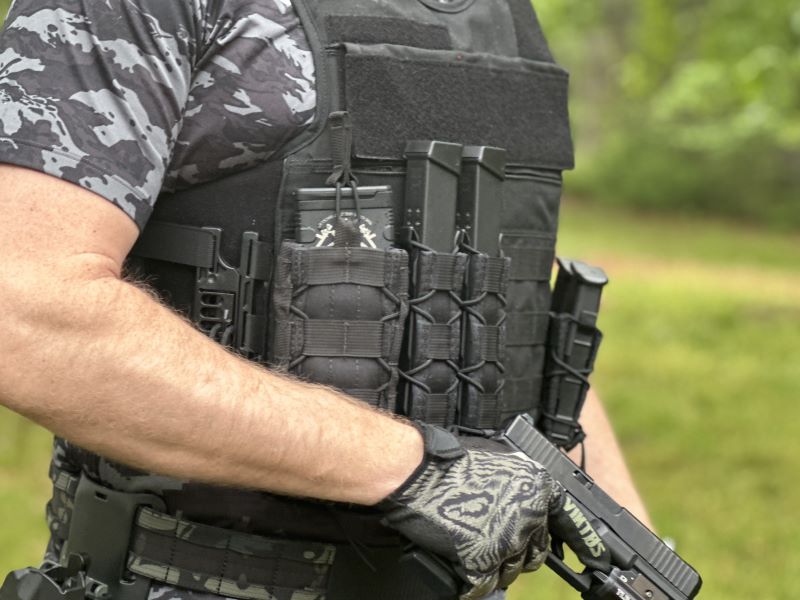If you are into tactical gear, there is a ton of stuff on the market now. A lot of the “tactical” gear we buy is probably more because we think it’s cool, but it does have a purpose. Tactical gear is a broad term and what makes something “tactical” is up for debate. Nowadays if it’s black, made for guns, hiking, or self-defense, it garners the phrase tactical.
Most tactical stuff today isn’t what I would have called tactical 20 years ago, but hey, things change. I’ll go with the flow and use the phrase for now. But regardless of what you call it, gear for self-defense and survival is a must-have for some of us. I have been in law enforcement for years, so people think it makes sense that I would have tactical gear like ballistic vests, combat-style boots, shooting gloves, mag holders, etc.

What gear should you have?
I have always found it odd that some states ban body armor. The police wear body armor for protection because it can save your life. They say it’s too dangerous for everyone else; that’s hogwash. They claim the bad guys will get ahold of it, but they seem to do that anyway. If body armor is legal in your state, buy a carrier and set up a vest.
If you hear someone kick open your door, a vest to throw on before you grab your gun could save your life. In the middle of the night, most people don’t think about grabbing an extra mag to take with them. But guess what your vest can hold? A vest is the center of your tactical gear. It protects you and holds all your stuff. That doesn’t mean loading it up to the max, but it can hold some extra ammo.

Is your gear compatible?
This is the area where a lot of people don’t spend enough time. I have met countless people who purchased mag carriers for their vests, holsters, gloves, etc., and never checked to see how it all fit together. They assumed if they needed it all at the same time it would just work. Well, it doesn’t. Buy a high-ride holster with a low-fitting vest and you will have trouble getting your gun out of the holster.
Don’t even think about putting extra mags on your belt if your vest or plate carrier hangs down too far. This may sound silly, but some of the simplest things can become gigantic problems. I was on a team executing a search warrant on a drug house once when a suspect came running at us from the hallway. He was escorted to the ground very quickly and ready to be detained.

Train with your gear
The best way to see if your gear is compatible is to use it. Throwing everything on with price tags dangling as zombies chase you down the street is not the time to see how your cool gear works. Put it all on and practice with it. This includes boots, pants, shirts, vests, belts, holsters, and everything in between. Have you ever put a combat belt on with a holster and mag pouches and tried to get into your pants pocket?

Duty/combat holsters can be purchased in low-ride, mid-ride, and high-ride styles. Decide which style works best with your gear. When it comes to loading up your vest, keep it simple. I started out with everything on my vest that it could hold. Now I have some extra mags and a tourniquet. This can change depending on the need for the vest, but I decided mobility was more important than having a bunch of extra stuff. If you are hoofing it on foot for a long distance, you may need to take more stuff with you.
Does it work?
There are all kinds of cool gear and all kinds of ways to carry it. It’s okay to set up your gear the way you want, just make sure you can function with it. Looking at a vest on the table as you attach everything is different than wearing it. You may need to adjust after trying to reach your gear. So, configure, test, reconfigure, and test again. It may seem like a pain, but it’s worth it in the end. In the process of getting everything configured, you will also get really good at putting your gear on fast. And if you don’t want to sound like a kid, call it dressing out, not dressing up.


